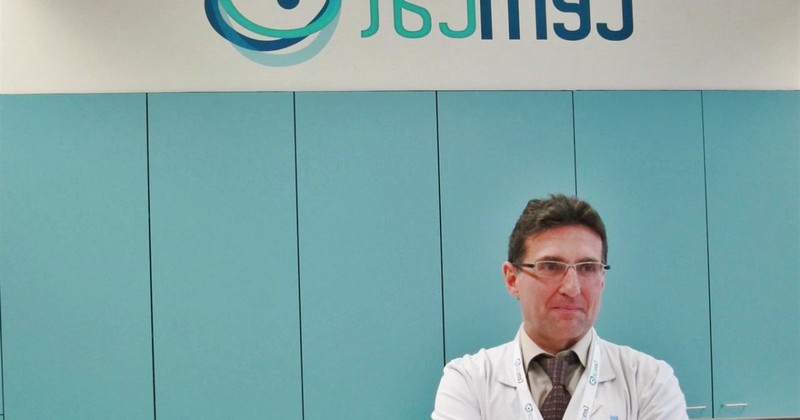First effective drug to delay the progression of primary multiple sclerosis

News: an experimental drug could slow the progression of this neurodegenerative disease.
The company Genentechbelonging to the Roche Groupannounced on September 27 that the Phase III clinical trial of the experimental drug Ocrelizumab has been satisfactory.
This drug has delayed the progression of primary progressive multiple sclerosis (MMS) in its early stages by at least 12 weeks.in its early stages. This subtype of multiple sclerosis (MS), which affects approximately 10 to 15% of the population with this disease, is a very aggressive pathology. To date there has been no cure or treatment, but this multicenter study (at international level) with Spanish participation, has demonstrated the efficacy of this drug, which could become the first and only therapeutic option for patients with this disease.
Until now, there was no treatment for MME.
The study of this drug is known as the Oratorio and has been led by the head of the Clinical Neuroimmunology Service of the Vall d'Hebron Hospital and director of the Multiple Sclerosis Center of Catalonia (Cemcat), Xavier Montalban. In this study the efficacy of the drug Ocrelizumab has been investigated in 732 patients with primary progressive multiple sclerosis and the main conclusion is that it manages to slow down, for at least 12 weeks, the progression of the disability caused by the disease..
Montalbán wanted to celebrate the finding and stated:
"It is a truly historic moment. It is the first time that a drug has been shown to be effective in controlling this type of neurological disease. It opens a window towards a better understanding and treatment of multiple sclerosis".
This drug is a monoclonal antibody designed to selectively target CD20B+ cells that are believed to play a key role in the destruction of myelin and nerves, which causes the symptoms of multiple sclerosis. By binding to the surface of these proteins, Ocrelizumab helps preserve the most important functions of the immune system.
What is Multiple Sclerosis?
The multiple sclerosis (MS) is a neuroinflammatory disease that affects the central nervous system (CNS), both the brain and the spinal cord.. It is not known exactly what causes MS, but this pathology damages myelin, a substance that forms the membrane that surrounds nerve fibers (axons) and facilitates the conduction of electrical impulses between them.
Myelin is destroyed in multiple areas, sometimes leaving scars (sclerosis). These damaged areas are also known as demyelinating plaques. When the myelin substance is destroyed, the ability of the nerves to conduct electrical impulses to and from the brain is interrupted, and this fact produces the appearance of symptoms such as:
- Visual disturbances
- Muscle weakness
- Problems with coordination and balance
- Sensations such as numbness, itching or pins and needles.
- Problems with thinking and memory
Multiple sclerosis Affects women more than men. Onset is usually between the ages of 20 and 40, although cases have also been reported in children and the elderly. Generally, the disease is mild, but in more severe cases some people lose the ability to write, speak or walk.
In most cases this disease progresses in flares, but in primary progressive multiple sclerosis, the disability worsens continuously and slowly over months or years, so it is considered a severe form of this pathology.
Phases in the clinical development of a drug
Before a drug can be put on sale, it must follow a process to evaluate its efficacy and safety, thus avoiding putting the lives of the people who are going to take it at risk. The development of a new drug is long and difficult, as only two or three out of 10,000 drugs are developed. only two or three out of 10,000 pharmacological substances are ever marketed..
When the drug has been sufficiently evaluated in in vitro models and in animal studies (preclinical phase), research in humans begins, which is called clinical trials. Classically, the clinical development period of a pharmaceutical product is divided into 4 consecutive phases, but they can overlap. These are the phases that are part of the clinical trial:
- Phase IPhase I: This phase includes the first studies in humans, whose main objective is to measure the safety and tolerability of the compound. Given the level of risk involved, the number of volunteers is small and the duration of the phase is short.
- Phase IIThe risk in this phase is moderate, and its objective is to provide preliminary information on the efficacy of the product and to establish the dose-response relationship. Hundreds of subjects are needed and this phase may last several months or years.
- Phase IIIThis is the phase in which this drug is found, and it is necessary to evaluate its efficacy and safety under the usual conditions of use and with respect to the therapeutic alternatives available for the indication studied. For this reason, its use in combination with other drugs is tested for several months or years, during which the degree of incidence of desired and undesired effects is analyzed. These are confirmatory therapeutic studies.
- Phase IVPhase IV: This is carried out after the drug has been marketed in order to study it again in a clinical context, and to provide more information on its side effects.
Following the positive results of the Phase III clinical trial of Ocrelizumab, European authorization will be sought early next year to market the drug.. This usually takes about six months. Thereafter, each country will decide whether to allow sales in its territory.
(Updated at Apr 14 / 2024)